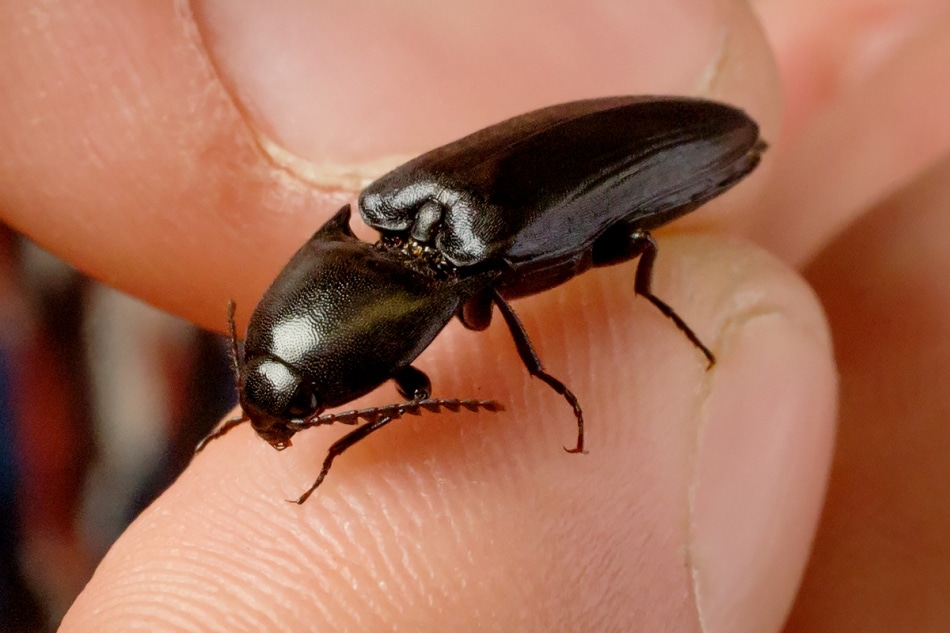Sep 26 2017
Robots perform a number of tasks that humans cannot or do not want to perform, getting around on intricately designed limbs and wheels. However, if they tip over, they are considered to be almost useless.
A team of University of Illinois Mechanical Engineers and Entomologists are looking to click beetles, capable of correcting themselves without the use of their legs, in order to solve this robotics challenge.
 Click beetles can jump without the aid of their limbs when they are tipped onto their backsides. A team of University of Illinois researchers are examining this mechanism to engineer self-righting robots. Photo by L. Brian Stauffer
Click beetles can jump without the aid of their limbs when they are tipped onto their backsides. A team of University of Illinois researchers are examining this mechanism to engineer self-righting robots. Photo by L. Brian Stauffer
The Researchers presented their findings at Living Machines 2017: The 6th International Conference on Biomimetic and Biohybrid Systems at Stanford University, and later went ahead and won second place in a student and faculty research competition at the international BIOMinnovate Challenge, in Paris, France – a research expo that showcases biologically-inspired design in architecture, engineering and medicine.
This idea came to life when a group of insect physiology students decided to take a closer look at what makes click beetles jump as part of a class project.
Marianne Alleyne, Study Co-author and Scientist, Department of Entomology Research
According to Alleyne, the beetles are made up of a unique hinge-like mechanism between their abdomens and heads that makes a clicking sound when initiated and allows them to flip into the air and back onto their feet when they are knocked over.
“Very little research had been performed on these beetles, and I thought this legless jumping mechanism would be a perfect candidate for further exploration in the field of bioinspiration,” said Alleyne, who teaches a bioinspiration design course with Mechanical Sciences and Engineering Professor, Co-author and Lead Investigator Aimy Wissa.
The Researchers observed several species of click beetles, ranging in size from only just few millimeters to several centimeters in length.
Each insect goes through an assembly line of analyses that involve basic characterization, high-speed filming to observe the jump and measurements in the Materials Tribiology Lab with co-author and mechanical sciences and engineering professor Alison Dunn, to determine how much force it takes to overcome the friction of the hinge within an individual beetles jumping mechanism. We observe, model and validate each stage of the jump with the hopes that we can later integrate them into a self-righting robot.
Aimy Wissa, Professor, Mechanical Sciences and Engineering
The group has already developed several prototypes of a hinge-like, spring-loaded device that will ultimately be included into a robot, the Researchers said.
“This study is a two-way street – engineers are informing the biologists and vice versa,” Wissa said. “We look forward to seeing where this research will take us and are very proud of the attention it received at the BIOMinnovate Challenge expo.”
This research was supported by the U. of I. department of Mechanical Sciences and Engineering and the Department of Entomology. Ophelia Bolmin, the Key Author of the study, is supported by the Fulbright U.S. Student Program and the Monahan Foundation.